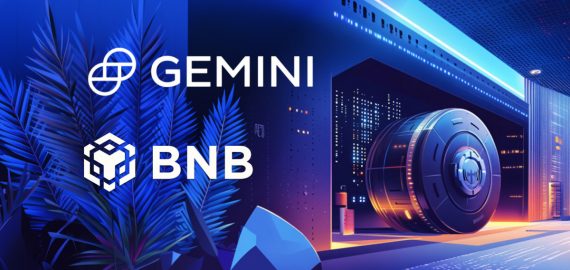Art or Investment? High-Stakes Court Case Questions SEC’s Grip on the Burgeoning NFT Market


In Brief
Two artists, Brian Frye and Jonathon Mann, have filed a lawsuit against the SEC to challenge the SEC’s oversight of the emerging NFT industry.

Since it is unclear whether NFTs qualify as securities, two artists have filed a lawsuit against the SEC in the United States. Filmmaker and law professor Brian Frye, together with musician Jonathon Mann, filed this case to challenge the SEC’s oversight of this developing industry and to explain the regulatory environment around NFTs.
The basic question at the center of the controversy is this: At what point does a digital artwork transition from a form of creative expression to a controlled security? Due to the recent explosion of the NFT market, which has drawn interest from regulators, collectors, and artists alike, this problem has acquired relevance.
The complainants contend that innovation and creative expression are being stifled by the SEC’s present position on NFTs. They argue that artists may be subject to burdensome registration and disclosure requirements usually reserved for traditional financial instruments if NFTs are treated as securities. They contend that doing so would hinder innovation and place unjustified restrictions on artists who are only experimenting with new media.
NFTs vs. SEC in Landmark Lawsuit
The complaint presents a compelling comparison between NFTs and concert tickets, namely those of pop star Taylor Swift, in order to make its claim. The lawyers for Frye and Mann contend that even if Swift’s concert tickets are frequently traded on secondary markets and their value is subject to change based on demand, it would be ludicrous for the SEC to categorize them as securities. They contend that NFT artworks need to be seen more as creative outputs than as contracts for investments.
In order to stop what the plaintiffs claim are improper enforcement efforts by the SEC against NFT ventures, the case seeks relief through declaratory and injunctive proceedings. Following the SEC’s first NFT-related prosecution against Impact Theory, LLC in August 2023 comes this legal challenge.
The corporation in the Impact Theory case was accused by the SEC of making an unregistered securities offering by selling “Founder’s Keys” NFTs. According to the commission, Impact Theory had persuaded prospective investors to think of buying these NFTs as an investment in the firm, with earnings based on Impact Theory’s performance.
The NFT community was shaken by this enforcement action, which also sparked questions about how broadly the SEC would interpret securities rules in regard to digital assets. Significant financial penalties and the requirement for the corporation to delete any NFTs in its control were part of the settlement agreed with Impact Theory. Some have criticized this decision as overly stringent and fear it will create a dangerous precedent for digital art.
The Howey Test Meets Digital Art
The Frye and Mann litigation emphasizes the necessity for regulatory authorities to provide more precise rules and a more sophisticated knowledge of NFTs. The artists contend that their circumstances are comparable to those of any other conventional artist who produces and markets their work. They argue that, unlike selling a tangible painting, the process of minting an artwork as an NFT should not immediately expose it to securities legislation.
The discussion of the proper degree of regulation for developing technology is further heightened by this legal challenge. On the one hand, it is obvious that in the unstable and sometimes opaque world of digital assets, investors need to be protected from fraud and manipulation. In this regard, the SEC’s duty to uphold efficient and fair markets and safeguard investors is certainly important.
However, excessive control runs the danger of restricting originality and creativity in an area that is still developing. Artists now have more opportunities to make money off of their work and interact creatively with their viewers, thanks to the NFT space. Enforcing onerous regulations could deter artists from investigating these novel avenues and perhaps impede the advancement of the technology itself.
The verdict in this dispute may have a major effect on the development of NFTs and digital art in general. If those suing win their case in court, the SEC may be forced to reevaluate how it regulates NFTs, and artists and producers in this industry may receive much-needed clarification. On the other hand, a decision that supports the SEC’s position might strengthen its control over NFTs and could result in more market regulation and surveillance.
It is important to remember that the regulatory environment around NFTs is not exclusive to the US. Around the world, similar discussions are taking place in various jurisdictions. For example, in the UK, there has been debate about whether selling shares in a Banksy artwork and fractionalizing them counts as a collective investment plan that has to be regulated by securities laws.
Trading on the secondary market may be impacted if NFTs are categorized as securities. The liquidity and accessibility of the NFT market may be restricted if NFTs are regarded as securities and the platforms that enable their transaction are forced to register as securities exchanges or alternative trading systems.
The litigation also brings up interesting problems concerning the nature of art and business. Art has historically been gathered for financial purposes in addition to its aesthetic worth. This dual character of art has become increasingly technologically mediated and evident with the emergence of NFTs. Regulators used to working with more distinct financial products face new difficulties as a result of the blurring of the boundaries between art and investing.
It’s important to think about how regulatory uncertainty can affect blockchain technology’s wider use and advancement. For the general public, NFTs are among the most prominent and approachable uses of blockchain technology. If this industry is too regulated, it may hinder innovation and the uptake of the underlying technology in other industries.
Innovation vs. Investor Protection Within the NFT Industry
Even inside the commission, there have been some who disagree with the SEC’s stance on NFTs. SEC Commissioners Hester Peirce and Mark Uyeda questioned whether the NFTs in question actually met the criteria to be considered securities under the Howey test in a dissenting statement they made after the Impact Theory settlement. They contended that Impact Theory might not have provided enough information for investors to anticipate financial gains from the business’s endeavors.
Concerns over the need for enforcement action in situations where businesses have previously taken action to resolve any violations—like buyback programs—were also voiced by Peirce and Uyeda. Their disagreement emphasizes how difficult it is to apply current regulatory frameworks to modern technologies and how important it is to carefully weigh the possible outcomes of regulatory measures.
Disclaimer
In line with the Trust Project guidelines, please note that the information provided on this page is not intended to be and should not be interpreted as legal, tax, investment, financial, or any other form of advice. It is important to only invest what you can afford to lose and to seek independent financial advice if you have any doubts. For further information, we suggest referring to the terms and conditions as well as the help and support pages provided by the issuer or advertiser. MetaversePost is committed to accurate, unbiased reporting, but market conditions are subject to change without notice.
About The Author
Victoria is a writer on a variety of technology topics including Web3.0, AI and cryptocurrencies. Her extensive experience allows her to write insightful articles for the wider audience.
More articles

Victoria is a writer on a variety of technology topics including Web3.0, AI and cryptocurrencies. Her extensive experience allows her to write insightful articles for the wider audience.

















































